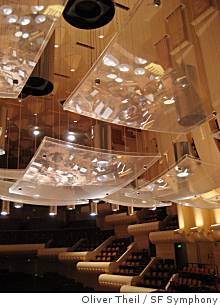 One art form which is en vogue at the moment in the Bay Area and elsewhere is the practice of composing and performing new musical scores to accompany silent films.
One art form which is en vogue at the moment in the Bay Area and elsewhere is the practice of composing and performing new musical scores to accompany silent films.
One of the highlights of the annual SF International Film Festival is its combination of live rock music and silent film at the Castro Theatre. Recent years have witnessed pairings between Deerhoof and Harry Smith’s Heaven and Earth Magic, Lambchop and Murnau’s Sunrise, Yo La Tengo and Jean Painlevé’s wildlife films, and, last year, Dengue Fever performing the world premiere of their newly composed score for Harry Hoyt’s 1925 dinosaur epic The Lost World. Meanwhile, local composers like Jill Tracy write and perform luxuriant noirish scores at cinemas all over the Bay Area.
Because silent film has no dialogue or other sound, the musical score has the potential to stand out much more clearly than in a talkie, which gives composers much more creative leeway in some ways. Yet writing music for this medium has its challenges. The composer must take care not to usurp the pictures with his or her soundscape. He or she can underscore the mood of a scene or perhaps even undercut it if going for a special effect. But the music should always be in service of the images and shouldn’t guide audience members emotions in ways that don’t fit with the film. Because the filmmakers of these early films are mostly long dead by now, keeping all these elements in check is difficult — the creator of the movie isn’t around to consult with about mood, intention, and other qualities visible on screen.
Last night’s San Francisco Film Festival event, Music for Silents, showed how composing for early film can be done well. Musician Steven Severin, co-founder of the 70s British punk band Siouxie and the Banshees and, more recently, a film composer, presented his original score for The Seashell and the Clergyman (1928), a French Surrealist fantasy directed by Germaine Dulac and written by Antonin Artaud.
The film’s plot, if it can be said to have one at all, is obscure. The story seems to revolve around a randy Catholic priest whose obsession with women leads him to behave erratically. He rips off a female character’s bustier and strangles a fellow priest, among other things. It’s no wonder that the British Board of Film Censors called the film blasphemous and banned it.
Severin’s electronic score thrums with life throughout the 35-minute film. The pulsations draw us into ourselves. Our breathing slows and before long we find ourselves occupying the same psychological space as the characters. The low church organ-like rumbles suggest the religious landscape of the story. Meanwhile, some fast, scattered phrases create a flighty, bird-like energy. It’s as if the music is mimicking the rapid heartbeat of the priest.
The combination of music and visuals reminded me strongly of the Cremaster films of Matthew Barney, owing to the mixture of cold, sepulchral stasis in the composition of some of the images and throbbing score and larger-than-life emotions.


 I’m constantly struck by the ways in which music, more than any other artform, is capable of stirring up deep personal memories. It’s also interesting to see how those memories mutate over time.
I’m constantly struck by the ways in which music, more than any other artform, is capable of stirring up deep personal memories. It’s also interesting to see how those memories mutate over time. I’ve always wondered about the futuristic-looking convex panels in Davies Symphony Hall that glide up and down during performances to hone the acoustics of the auditorium.
I’ve always wondered about the futuristic-looking convex panels in Davies Symphony Hall that glide up and down during performances to hone the acoustics of the auditorium.


 Should the rules that apply to one genre of music apply to another?
Should the rules that apply to one genre of music apply to another?
 Many creative people don’t feel comfortable about attending performances of their own work. I’m not sure why reliving this experience makes them feel awkward. Does it have something to do with embarrassment at being the center of attention? Or perhaps a fear that people won’t respond positively?
Many creative people don’t feel comfortable about attending performances of their own work. I’m not sure why reliving this experience makes them feel awkward. Does it have something to do with embarrassment at being the center of attention? Or perhaps a fear that people won’t respond positively? Calling all lovers of vocal music!
Calling all lovers of vocal music!